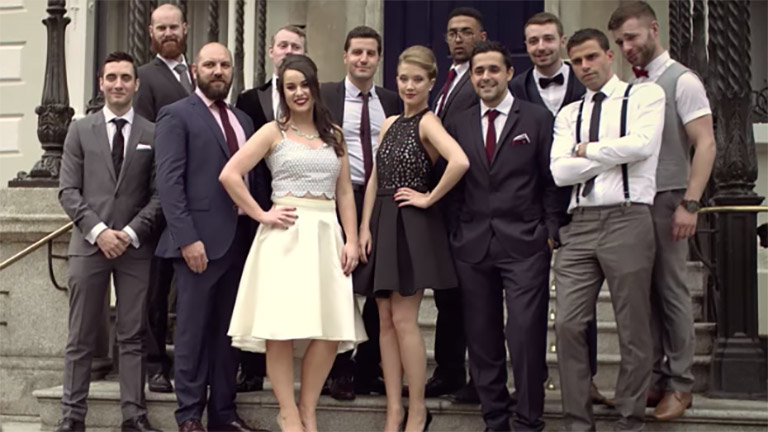To Sell More, Talk About Products Less —
A Lot Less

The company also appealed to Timo’s passion for coaching and mentoring.
“Salesforce is a coaching company. Mentoring and giving feedback are essential here. There’s a strong alignment between sales development and the sales organization. The current sales development representatives (SDRs) and business development representatives (BDRs) are the account executives (AEs) of the future.”
In his previous role as AE, Timo often invited SDRs and BDRs to join customer calls and gain experience for future roles. And many individuals approached him to do dry-runs of their presentations for promotion interviews.
Now, coaching is part of Timo’s day-to-day as he serves as SDR Manager for Germany, Austria and Switzerland (DACH).
“I’m focused on recruiting and hiring the best talent in Europe and interviewing potential candidates is an integral part of my week.”
He believes the sales process at Salesforce differs significantly from other tech companies — and in ways that could help anyone considering a sales career. Here are three practical suggestions from Timo’s experience.
Talk About the Product Only Five Percent of the Time
In Timo’s world, if you spend most of your time talking about the product, you’re always in “pitching mode.” And, pitching mode often puts potential customers on the defensive. Instead, focus your energy on listening to the customer.
“In Salesforce, we operate as consultants, approaching the sales cycle from the customer’s point of view. I only spend about five percent of my time talking about Salesforce products. Ninety-five percent is about the customer’s business requirements, their vision, and their goals for the future. Where are they trying to go?”
It’s especially important to understand what the founders and managing directors are trying to achieve. Together, you can develop a strategy. Only then it is time to talk about solutions and determine which products can help customers on their digital transformation journey.
Learn to Include and Adapt to Different Points of View
The more customer points of view you include in an account, the more value you can bring to the company’s business. For example, with a visionary CEO, you’re likely to have very future oriented discussions. CTOs are likely to have more immediate and tangible concerns such as IT infrastructure and strategy. With them, you’ll have conversations about how a solution can bring and accelerate business value compared to their homegrown systems.
The same holds true for working with the different members of an account team because almost every project will present a challenge you’ve never encountered. But there’s likely someone in your internal network who has and will know who to reach out to for help.
Don’t be Afraid to Make Mistakes
When you join a company, it can be overwhelming at first. There’s a lot to learn and pressure to learn it quickly.
“When I joined Salesforce, it was a whole new world — even though I had experience in technology and sales. There was a very intense orientation in the beginning and there were points when I felt overwhelmed.”
Many people react to this pressure by trying to be perfect — avoiding mistakes. But that in itself is a mistake. To err, as they say, is human.
“The biggest learnings I’ve had at Salesforce were times I did something wrong. And here, you’re not penalized for making mistakes. Managers just want to see that you’re engaged in what you do, and that you can deal with problems or course-correct.”
This experience convinced Timo to help new hires and those in more junior roles get the most out of the educational resources Salesforce offers.
“It’s not the worst thing in the world to do something wrong. There’s always an outcome you can learn from.”
The Ohana Spirit — Alive and Well in Dublin
Timo is an enthusiastic booster for the culture of Ohana — which means family.
“In Dublin, Ohana is real. The people I work with have become my friends that I spend free time with.”






